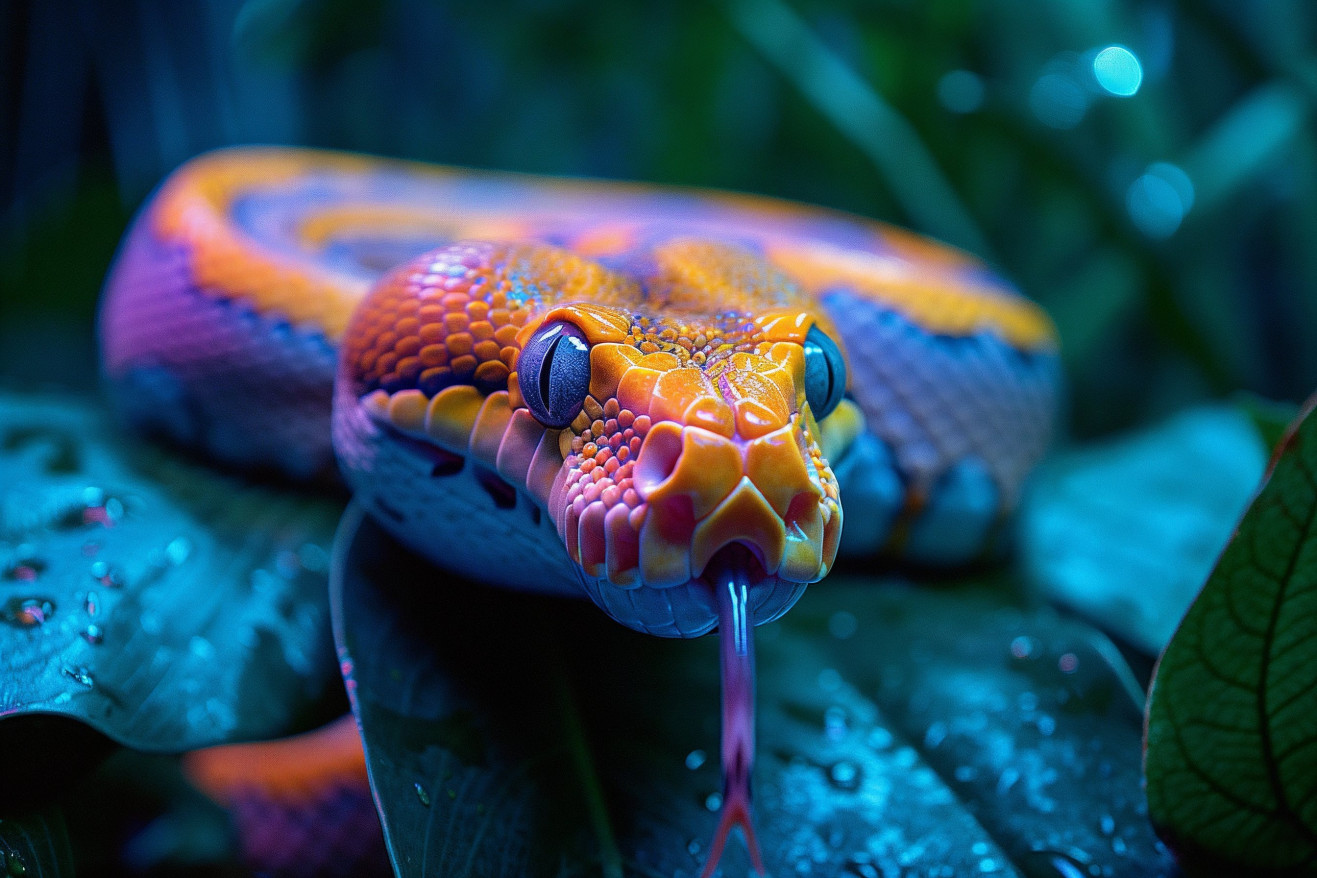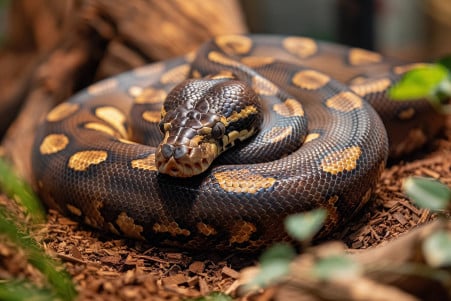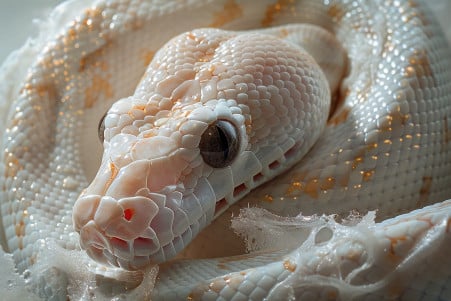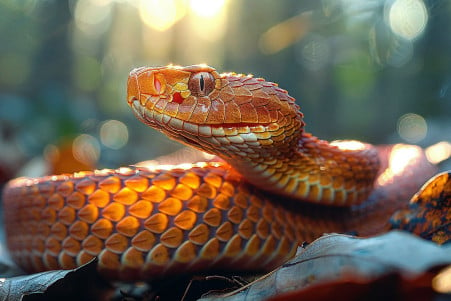Do Snakes Come Out at Night? Understanding Snake Activity Patterns
8 February 2024 • Updated 8 February 2024

As the sun sets and the moon begins to rise, you may find yourself wondering about the mysterious lives of snakesare they nocturnal? The truth is that snake activity patterns are quite diverse, with some species being nocturnal, others diurnal, and still others crepuscular.
A number of factors, including temperature, prey, and habitat, can impact a snake’s activity pattern. For example, both rattlesnakes and boa constrictors are known to be nocturnal hunters, and both have been shown to adjust their activity levels based on their environment.
In this article, we will take a deep dive into herpetological and behavioral ecology research to learn more about the world of snake activity patterns.
By the end of this article, you will have a good sense of the range of snake activity patterns and the environmental factors that can influence them. Drawing on scientific research and expert insight, we will provide a thorough understanding of whether and why snakes are more likely to be nocturnal.
Do snakes come out at night?
Understanding the Sleep Habits of Nocturnal and Diurnal Snakes
Because of their diverse behaviors, snakes can be either nocturnal or diurnal. The South African National Biodiversity Institute explains that the black mamba is an example of a diurnal snake that is active during the day and uses the daylight hours to hunt due to its excellent vision.
On the other hand, A-Z Animals points to a study in Ecology of Sleep in Reptiles that shows that the ball python is a nocturnal snake that sleeps during the day and is most active at night when it hunts.
These sleep patterns are influenced by a number of factors, including diet, the environment, and genetics. For example, as A-Z Animals notes, nocturnal species like rattlesnakes and boa constrictors have evolved to be nocturnal hunters, which is a result of their genetics and the fact that their prey is nocturnal.
Another interesting behavior that some snakes exhibit is brumation, a period of dormancy that is similar to hibernation. This is another example of a snake behavior that is influenced by the time of year. Brumation helps snakes save energy when the weather gets colder and food is less available.
When you consider these nocturnal and diurnal behaviors, it becomes clear that snakes are influenced by both their biology and their environment. This complex relationship between innate behaviors and outside influences makes it clear that there is much more to learn about the environmental factors that impact snake behavior.
Environmental Factors That Influence Snake Activity
One of the most important factors that influence snake activity is temperature. Since snakes are ectotherms, they depend on the environment to regulate their body temperature.
A case-crossover study published in PMC found that snakebites in Georgia, USA, increased with temperature, especially in the spring, leading the researchers to conclude that snakes are more active when it’s warmer. This is in line with the general idea that snakes are more active when the temperature is right for hunting and metabolism.
Another important factor is the availability of prey. If prey is most available at night or during cooler parts of the day, snakes will be more likely to hunt at those times.
The type of habitat a snake species lives in can also determine whether it’s nocturnal or diurnal; for example, a study by Jesse Meik in the Cross Timbers region, which is home to many species of snakes, found that different species of snakes had different responses to the same environmental factors, showing that the relationship between environmental factors and snake activity is complex.
These factors are further complicated by seasonal changes. For example, a study by Andrew S. Hoffman found that timber rattlesnakes altered their spatial behavior in response to habitat conditions in different seasons. Winter brumation and summer estivation also have a big impact on snake activity, leading to a clear seasonal difference in snake activity.
These factors show that snake activity is constantly changing and adapting to the environment, which makes us wonder how their sensory systems have evolved to help them adapt to these changing conditions.
Sensory Adaptations and Nocturnal Behavior
Sensory adaptations play a major role in the lives of snakes, especially those that are active at night. According to A-Z Animals, the pit organs that are found in vipers, pythons, and boas allow these snakes to sense infrared radiation, which has given them a major advantage in hunting at night by enabling them to sense the body heat of their prey.
In addition to these differences, nocturnal and diurnal snakes also have differences in their vision, with nocturnal snakes having more rod cells, which increases their sensitivity to light but decreases their ability to see color and detail.
According to research from the Natural History Museum, the lenses of nocturnal snakes allow more ultraviolet (UV) light to pass through, which helps them see better in low light.
On the other hand, the lenses of diurnal snakes, who need to see well in the light, block UV light to protect their eyes.
As a result of these evolutionary differences in vision, snakes have adapted to a wide variety of light conditions, from the darkest nights to the brightest days. The complexity of snake visual systems demonstrates the importance of these sensory adaptations in evolution, and how they have impacted the nocturnal activity patterns of different snake species.
The Impact of Moonlight on Snake Behavior
Several lines of evidence have demonstrated the importance of moonlight in shaping the behavior of nocturnal snakes. For example, a study on the desert nightsnake (Hypsiglena chlorophaea) showed that this species decreases its activity during the full moon, which the authors suggest is an adaptive response to reduce predation risk and maximize foraging opportunities (see Effects of Simulated Moonlight on Activity in the Desert Nightsnake).
Meanwhile, adult prairie rattlesnakes (Crotalus viridis viridis) also reduce their activity when the moon is brighter, which the researchers propose is an anti-predator response that also helps them better align their activity with that of their prey (see The effect of moonlight on activity patterns of adult and juvenile prairie rattlesnakes).
In contrast, juvenile rattlesnakes don’t alter their behavior in response to the moon, which the authors suggest may be because they consume different prey or face a reduced risk of being preyed upon. The varying reactions of adults and juveniles to moonlight indicate that the influence of moonlight on snake behavior is complex and varies with age.
This complex interplay between moonlight and snake activity is part of a larger pattern in which moonlight can be both a time of opportunity and a time of danger. Untangling how snakes respond to these lunar cues is essential to understanding the complexities of their nocturnal lives.
The Serpent’s Circadian Rhythms
Circadian rhythms are internal biological clocks that help regulate the daily cycles of all living organisms, including reptiles. Circadian rhythms are influenced by both internal and external factors, such as light and temperature, and are often on a cycle that lasts about 24 hours.
An article published in PubMed by C Bertolucci explains that reptiles, including snakes, have a multioscillatory circadian system, which means that different parts of the body, including the retinas and the pineal gland, have their own circadian clocks, and their effects can vary by species and time of year.
An article published in ScienceDirect about the African house snake (Lamprophis fuliginosus) found that there were daily fluctuations in metabolic rate, which is evidence of the impact of circadian rhythms on snake activity. These rhythms may dictate when snakes are most active, potentially increasing their activity levels at certain times of day or night based on whether they are nocturnal or diurnal.
The fact that circadian rhythms play a role in snake activity also means that disruptions to these rhythms could have a big impact on when snakes are active.
By learning more about these rhythms, researchers can better understand the complexities of snake ecology and behavior, which will help people better appreciate the snakes’ ability to adapt. It will also help researchers learn more about how these rhythms are affected by changes in the environment and human activities.
Shedding Light on Nocturnal Mysteries: The Role of Snakes in the Twilight Zone
In the interplay between light and dark, snakes demonstrate a rich array of behaviors that mirror the interplay between their nocturnal and diurnal lives. Our key takeaways suggest that while some snakes are strictly nocturnal, others are diurnal or have a mix of the two based on a combination of environmental factors, sensory adaptations, and internal biological rhythms.
Our observations show that temperature, prey, and the type of habitat are all important in determining snake behavior, and that snakes have evolved to meet these needs with adaptations like pit organs and better vision. In addition, the moon has an impact on snake behavior, changing the way they behave at night. Meanwhile, the circadian rhythms that snakes have show the importance of internal biological clocks in determining their daily rhythms.
Our study of snake ecology shows that we need to consider snakes’ adaptability and the evolutionary processes that have enabled them to prosper in a variety of environments. This demonstrates the need for ongoing research and observation to learn more about these enigmatic animals and their role in the intricate web of life on our planet.


